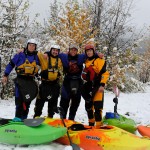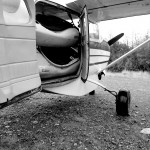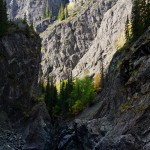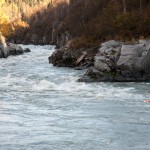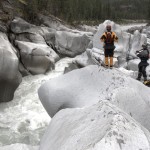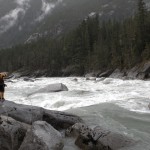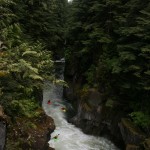I love kayaking, and it is for this sole reason why I know I want to be able to kayak my whole life. Self preservation and sustainability is central to this. I have now been kayaking for well over half my life. I have seen myself transform from a beginner kayaker aged 9 to the expedition kayaker I am today. Throughout this journey the period of time I wish to look back on, share and discuss with anyone reading this is the transformation from aged 18 – present, 23 and lessons I learned.
Aged 18 I made the decision to branch out of the UK and go on my first true extended kayak trip, 3 months in Norway. Best decision of my life. Norway turned out to be everything I had dreamt about, epic white water, great people, a true testing ground.
On this trip I pushed myself harder than ever before, I ran almost everything I set my eyes on. I was so keen and fearless I just wanted more! I did this not because of peer pressure. In fact on a hand full of occasions many of the people I was paddling with the likes of Matt Tidy, Maxi Kniewasser and Andy Phillips to name a few would occasionally walk things I would not. Reflecting on this the difference is experience. These individuals were more skilled and completely understood the dangers of each rapid and what was required to style them. This only comes through experience. At the time my skill level far surpassed my experience. It is for this reason why my kayaking at this time was not sustainable. I had 4 swims that season 2 of which were very close calls.
Aged 19, I returned. This time more experienced, more skilled and as keen as ever. Similar story, I gave it my all, went as hard as I possibly could. What was interesting on this trip was that I was walking rapids that I had previously ran the year prior. I had absolutely no desire to run them again. The reason for this was experience, it’s like I unlocked an additional layer in reading the river, a deeper insight into dangers. This has continued to develop as I have paddled more rivers.
I know live in British Columbia. I moved here aged 20. BC is unique, its rivers continuous, many deep inescapable canyons, high water runs on every river, caves, wood anything that is dangerous is in BC. It is and always will live up to its reputation as one of the most epic kayak destinations in the world yet one of the most dangerous. Here especially, and in many other places in the world, decision making can be the difference between life and death.
I would like to share with you an experience that developed my perspective on hard white water. Summer 2011, I had the worst swim of my life. I swam for 700 meters down Fear Canyon of the Elaho, one of Whistlers many test pieces, often described as the training run for the Stikine. Deep in the canyon there is a rapid named Mini Wassons, 2 stacked ledge holes one on river right one on river left. You have to thread the needle. I was kayaking with a hand full of the best kayakers I know, Louis Geltman and Chris Gragtmans to name a few. Everyone, except myself decided to run a safer chute hard river right. I went for the main line. I styled the line, I was fist pumping down the river but suddenly wham. I was getting smashed in a small ledge hole after the main event, not visible from where we were scouting from. 20 seconds of getting worked and no sign of a way out, I pulled my deck only to be in the middle of the biggest volume class 5 run in the area. I was helpless and exhausted spending 50 meters at a time under water only ever getting half breaths every 20 seconds. I was a inch away from drowning, Chris saved my life, he managed to pull me a shore 20 meters form the crux of the canyon. Had I swam into that I would not be here now.
What I leaned form that:
• If the consequence of swimming is death is it worth it?
• But more importantly, is running it and swimming going to endanger my team members. I asked a lot from Chris on that day. He ran 700 meters of class 5 blind to save my life. I will try my hardest to never force anyone to do that again.
• Be sure before you run things that you have assessed ALL the dangers and can accept the risk presented.
• If the risks are high make sure you are 99 percent sure you will make the line.
The message I am trying to portray is be increasingly vigilant, make the right decisions, ensure your experience and skill levels are as equal as possible. If they are not, build on your experiences slowly, do not rush things, the rivers will always be there. Learn from the more experienced kayakers around you, discuss lines, if someone is walking a rapid ask yourself, why? Maybe it is because they are having an off day or simply are not feeling it, but maybe it is because they have more insight in the potential effects of messing up your line.
I know I want to be able to kayak forever. I have learned from my own lessons and peoples around me. I do everything in my power to kayak sustainably in order to give me the best possible chance to kayak for many years to come!
Thank you Pyranha for all the support, the Burn and the Shiva are the tools I use and I love them. Below are a few pics of what I have been up to over the past few years.




